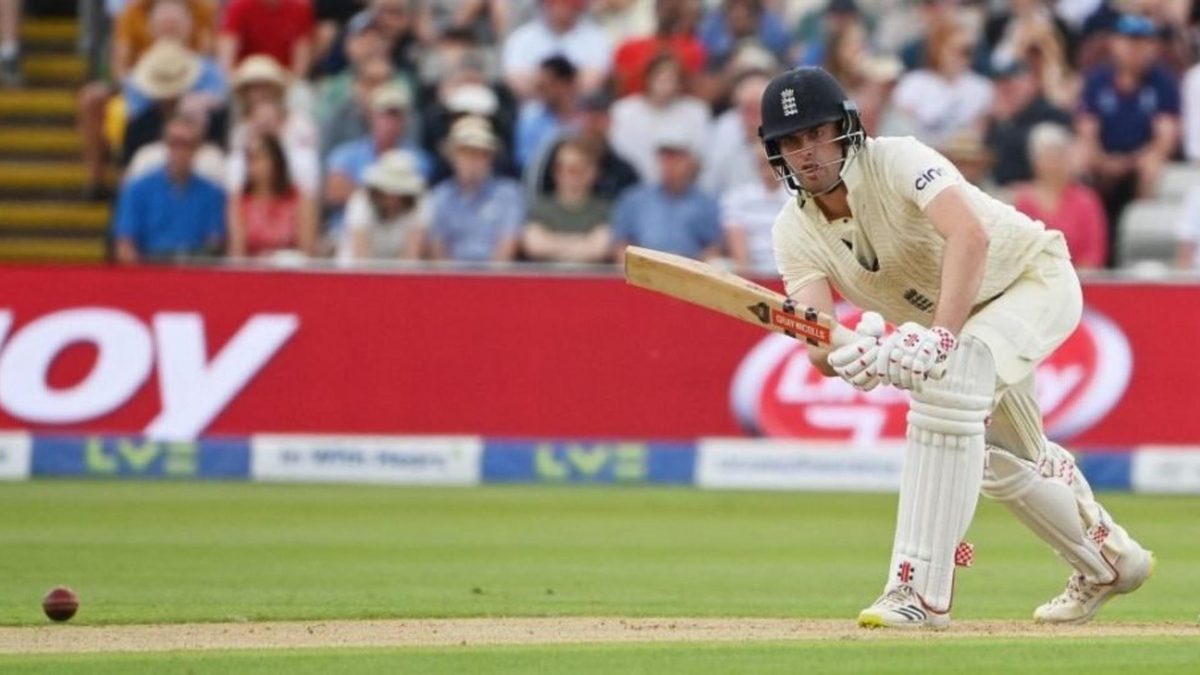
Yas Rana defends Dom Sibley in the face of stringent criticism from some vaunted ex-pros.
Sometimes Dom Sibley must wonder what he’s done wrong. In the midst of a prolonged break between Test series, during which Sibley has been spending time playing second team T20 cricket for his county side, he was on the receiving end of scathing criticism from two bona fide legends of the game in Mark Waugh and Shane Warne, with the former remarking, “He’s not a Test player” and the latter commenting, “I just don’t know how he can play Test cricket.”
“As a bowler, you worry about batsmen that can hurt you,” said Warne. “No one’s thought of this. The England middle-order are suffering, because all the bowlers who play against England have got their tail up and confidence up because they are not getting hurt by Burns and Sibley. They can’t punish them, they can’t hurt them on any level. All they can do is survive and see off the shine. That’s no good. You have to put pressure on the bowler, and these two can’t do that.”
Contrary to Warne’s claim, some people have actually thought of this, and it’s far from the first time Sibley’s scoring rate and range of shots have attracted criticism from former players. After his second Test hundred, his first at home, he popped on his hotel room television to watch the highlights. Given what he’d achieved on the field that day, it would not have been unreasonable to expect that a watch of the highlights would be an overwhelmingly pleasant experience. Instead, he was met with extensive commentary on his scoring rate in a Test England would go onto win despite losing a day to rain.
“I was a little taken aback by some of the comments,” Sibley told the Wisden Cricket Weekly Podcast earlier this year. “I watched the highlights back that evening in the hotel because we were in the bubble and there wasn’t anything to do. I remember hearing sarcastic comments and I felt a little bit disappointed and a little bit hurt.”
Aspects of the criticism directed towards Sibley are broadly fair. His limited range of strokes invites pressure; it allows bowlers to settle into a rhythm without having to worry about going for runs. But it feels excessive for a few reasons.
First of all, that pressure would be of more concern if Sibley was at all prone to collapsing under it. But Sibley is admirably undeterred by the building up of dot balls, a virtue that is less in vogue than it once was in Test cricket. Secondly, it’s not as if England have a long queue of stroke-making, top-order red-ball batsmen out of the side.
The reserve batsman for the New Zealand series was Haseeb Hameed, who is widely regarded as possessing a ‘higher ceiling’ than Sibley. And while Hameed’s return to form in 2021 has been stirring, it’s worth remembering that he has scored hundreds in just two first-class matches since the start of 2017, is only a year younger than Sibley and his first-class and Test strike-rates are both lower than Sibley’s equivalents.
After
The most likely batsman within the current side to displace Sibley as Burns’ opening partner is Zak Crawley (Test batting average of 29.33, first-class batting average of 31.44) which goes onto the crux of Waugh’s most valid observation – the county game is not brimming with Test-ready batsmen. Sibley might only be the best of the uninspiring bunch, but he still is the best of them.
Sibley can draw on the recent performance of Cheteshwar Pujara in Australia as something to aspire towards. Pujara’s stonewalling played an important role in India’s epic heist Down Under, and the impact of his performance, like some of Sibley’s better days for England, isn’t immediately obvious from the numbers. Pujara averaged 33.87 across the series with a strike-rate under 30. Against a team like Australia, who in stark contrast to England are reluctant to rotate members of their first choice attack out of the side, knackering the opposition across a series is invaluable. By the final day at Brisbane, Pat Cummins and Co. were shot, and Rishabh Pant cashed in in unforgettable fashion.
In Ben Stokes and Jos Buttler, England have two players capable of playing the Rishabh Pant role. But both were absent for England’s series against New Zealand, and it was the struggles in the weakened middle-order that cost them. Sibley’s home record is decent. He averages north of 35 in home Tests, has made critical contributions to multiple victories and even in the defeat to New Zealand, his work alongside Burns at the top of the order was one of the few positives in an otherwise difficult pair of Tests. He made 60 not out to ensure a draw at Lord’s, and then saw out the first wicketless first session of a Test match by England in England since 2011. It was England’s Nos.3-5, who averaged 18 with a high score of 42, that lost them the series.
This isn’t to say success against India and Australia is a given for Sibley; it’s more that the criticism that comes his way is often unreasonably harsh. England’s problems with the bat in 2021 run far deeper than Sibley’s scoring rate. Sibley’s record in 2021 provides a glimpse into the issues elsewhere in the order: like the majority of England’s batsmen, he struggled on the tour of Asia. But while he averages a meagre 21.35 in Test cricket in 2021 he also has as many 50-plus scores as any other England batsman this year.
This isn’t the first time he’s unjustifiably been in the firing line. The hope will be as before, he rises above it and does what he does so well: blocks out everything that comes his way.







